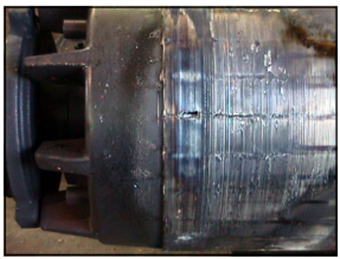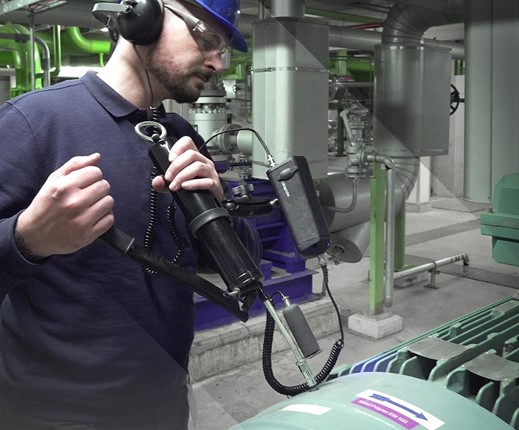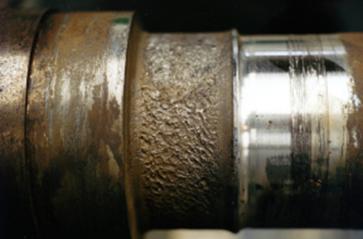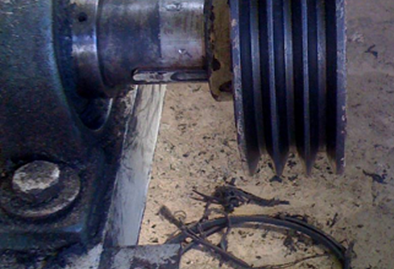Why Motors Fail: Part 2 – Avoid the Hidden Costs of Misalignment, Lubrication Issues, and Shaft Voltage
June 25, 2025
If your motor is failing mechanically, there’s a high chance you’re dealing with a bearing issue. And while that might sound simple, the story behind those failures is anything but.
HECO’s in-shop technicians have reviewed thousands of failure modes across 240+ client facilities by analyzing data from our TracRat equipment management software. When it comes to mechanical failures in both AC and DC motors, the same patterns show up again and again—patterns that cost plants time, money, and lost productivity.
In this post, we’ll expand on Part 1 of this series dive into the most common (and preventable) mechanical causes of electric motor failure and help you avoid them.
1. Under-Lubrication: A Preventable Point of Failure
Most bearings are not a set-it-and-forget-it aspect of equipment operation. To avoid issues, a motor’s bearings must have sufficient lubrication and be checked regularly.
A lack of lubrication can cause:
- Bearing surface scoring.
- Shaft damage.
- Bearing housing wear.
- Rotor-stator contact.
- Overheating.

An inadequate amount of lubrication accelerates wear and can damage multiple components, not just the bearing itself. By the time this type of failure is caught, the repair often becomes a full rewind or even motor replacement.
Ensuring that your bearings have the right amount of lubrication and that grease levels are proactively monitored will help increase your equipment’s efficiency and lifespan.
2. Over-Lubrication: When Good Intentions Cause Big Problems
On the flip side, another one of the most common causes of bearing failure is too much lubrication.
Grease is good but over-greasing can:
- Push past the bearing cap seal and coat motor windings.
- Block airflow and overheat the windings.
- Build up internal pressure and collapse bearing shields.
Bearings are typically rated for about 500 lbs. of pressure. When grease is trapped, that pressure can reach 5,000–6,000 lbs. The resulting stress causes premature failure, and if the rotor drops and rubs against the stator core, the motor might be a total loss.
Creating a route-based greasing schedule that factors in bearing size and runtime will help, especially if you use equipment that controls grease volume such as a calibrated grease gun or ultrasound solution.

3. Shaft Voltage: A Growing Concern with VFDs
Traditionally an issue in large motors, shaft voltage is now appearing in smaller motors with increased use of variable frequency drives (VFDs). These voltages can discharge through bearings, creating pitting, frosting, and fluting.

Solutions include:
- Ceramic-coated bearings.
- Carbon grounding brushes.
- Proper bonding/grounding of equipment.
- Aegis shaft grounding rings.
If you’re running a VFD on one of your motors and haven’t evaluated for shaft voltage, now’s the time.
4. Out-of-Tolerance Mechanical Fits: Little Issues That Really Add Up
Out-of-tolerance mechanical fits often develop subtly over time but can escalate into catastrophic damage if left unaddressed. Our data shows that such misalignments are common in motors subjected to prolonged stress, improper installation, or even manufacturing variances.
These issues may present as:
- Bearing housing issues.
- Undersized shaft journals.
- Rotor-stator contact.
- Coupling fit problems.

To avoid out-of-tolerance mechanical fits, perform precise inspection using micrometers and bore gauges to verify tolerances during installation and repair. You should also take a proactive maintenance approach that includes routine or route-based monitoring to inspect fits for wear and addresses deviations early.
5. Misalignment: Close Only Counts in Horseshoes
Misalignment between the motor and the driven equipment doesn’t just affect performance; it also places uneven loads on bearings, shafts, and housings. Over time, this increases vibration, shortens bearing life, and damages mechanical fits.
At HECO, we regularly see:
- Out-of-tolerance bearing housing fits.
- Damaged shaft journals.
- Coupling fit issues.
- Full-system vibration damage.

Higher-speed motors are particularly vulnerable—misalignment at high RPMs can cause catastrophic failure.
Utilizing laser or dial alignment tools to ensure precise coupling and shaft alignment during regular inspections along with measures to monitor vibration analysis will help ensure your motor is in alignment and alert you to take action when it is not.
All Systems Go
There’s a smarter way to monitor, diagnose, and respond to all of your equipment needs—let HECO monitor and repair your equipment.
When failures happen, HECO’s expert team doesn’t just swap out parts—we diagnose the real issue. We look for worn journals, misapplied motors, and subtle signs of long-term stress. Plus, if your company has worked with us before, some or all of the necessary data may already be captured in TracRat.
In Part 3 of this series, we’ll talk about the most common electrical failure modes of AC motors, how to see them coming, and how you should respond to maintain operational efficiency and uptime.
If you need help repairing and avoiding motor failures in the meantime, contact us.
Posted in Equipment Management, Repair
